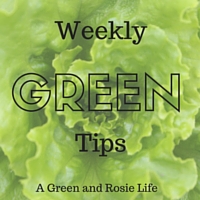Week 35 - How to avoid palm oil in food
Palm oil is something you won't find on the supermarket oils aisle but once you start looking at ingredients lists in foods you'll see it is is so many products. Palm oil is grown in tropical regions on land that has been cleared of rain forest to then grow the palm plantations. The forests are home to thousands of animal and plant species, the most notable in Asia being the Orang-outang whose population numbers are now plummeting. Clearance of the rain forests also contributes to climate change through increased CO2 levels and many palm oil workers are paid incredibly low wages and work in hazardous conditions without adequate protection.
This is a subject I will be returning to over the coming months. If you now feel you want to reduce or stop eating products containing palm oil here are 7 ways to go about that.
7 ways to avoid palm oil in food
1. Check food labels
However small the label read what is on there. If it has palm oil, put it back on the shelf and look for an alternative. I now always take my reading glasses with me when I go shopping!
2. Recheck labels
More and more manufacturers are adding palm oil when it wasn't there before so do periodically recheck labels to ensure they have not now added it.
3. Look for products that state they are palm oil free
Some manufacturers are cottoning on to the fact that the public are unhappy with eating palm oil and will proudly display a "Palm Oil Free" label.
4. Avoid processed foods and get back to cooking basics
Palm oil is solid at room temperature making it easy to add to processed products such as cakes, pastries etc. By avoiding processed foods you'll greatly reduce how much palm oil you consume so dust off that cook book and do more of your own cooking. Jaffa cakes contain palm oil (see below) but you can make your own with Mary Berry's recipe.
5. Buy local
Palm oil plantations are only found in tropical regions so if you buy foods that are locally produced you'll avoid it.
6. Recognise palm oil names
Manufacturers have to detail which oil(s) they use in their products so if you see any oil name with palm in it you'll want to avoid the product. All these are different names for palm oil in foods or contain palm oil:
Palm fruit oil
Palm kernel cake
Palm kernel oil
Palm oil
Palm olein oil
And if you are travelling abroad this might help (Or use Google translate to find it is another language I have not added here):
Danish - palmeolie
Dutch - palmolie
Finnish - palmuöljy
French - huile de palme
German - palmöl
Italian - olio di palma
Norwegian - palmeolje
Polish - olej palmowy
Portuguese - óleo de palma
Spanish - aceite de palma
It is also in all these e numbers - E304, E422, E430, E431, E432, E433, E434, E435, E436, E470, E470a, E470b, E471, E472, E472a, E472b, E472c, E472e, E472f, E473, E474, E475, E476, E477, E478, E479, E480, E481, E482, E483, E493, E494, E495
7. Contact manufacturers
Manufacturers need to know if you are avoiding their product so contact them via email or social media to say so. They may well come back saying their palm oil is from sustainable sources but this is so called "greenwash" ie not sustainable at all. A product grown on land that was, until very recently, virgin rainforest, that frequently uses child or forced labour and is then transported half way round the world is not ethical and therefore cannot be classed as sustainable. Do not be fooled by smooth words from public relations staff.
You can find a conversation I had with McVities on Facebook about palm oil in Jaffa Cakes here - all they seemed able to do was tell me that their palm oil was supposedly sustainable but went totally quiet when I asked them WHY they added it anyway as it never used to be there. I put a similar post on Pradis Global, their parent company, and they refused to publish it. The McVities post is now way down their visitor posts now so if you ask similar questions your posts will be more visible.
Manufactures rely on the public being unaware that their products contain palm oil. Let's start showing them we do know, we do care and we don't want it.
Please pin me ...





Thanks for listing alternative names. I know manufacturers are always trying to "hide" products so I appreciate knowing which names they may be using. This will be featured on next week's Waste Less Wednesday. Thanks for sharing!
ReplyDeleteThanks for he feature - I was amazed how many names can be used for palm oil.
DeleteThis is really interesting! I'll definitely be checking all of our labels from now on. #GoingGreenLinky
ReplyDeleteGreat post - I'm pinning and sharing.
ReplyDeleteIt seems to be in almost everything these days! I spent ages going through all the peanut butters on the shelf the other day, and found that all of the organic or supposedly healthier ones had palm oil in them. The one that didn't? Sun-Pat sugar-free - peanuts and not much else. Plastic jar though. Ever get the feeling we can't win at this?! :-/
ReplyDeleteI went through the same thing and hubby could not believe that you even needed palm oil in peanut butter. I thought Sun Pat was in glass jars but it is a long time since I have bought it. I must try making my own peanut butter instead.
Delete